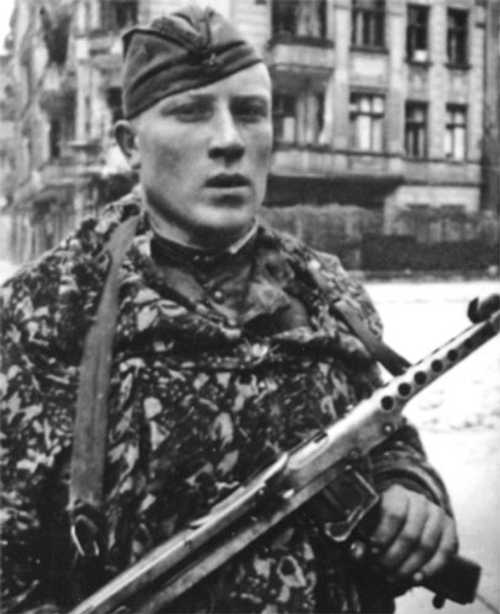
Soviet Forces
Sergeant F. Anikin IN CAMO, Berlin, May 1945
Image: Raboche-Krest\'yaskaya Krasnaya Armiya.
During World War 2, Russian reconnaissance units were one of the select few types of soldier who were issued MKK camouflage suits patterned in Type I leaf pattern camouflage. Late in 1940 or early in 1941, the Soviet army began to issue another two-piece camouflage uniform. Like the two-piece camouflaged suit that was issued in 1937–1938, this newer uniform was also designated 'deceptive camouflage suit' (Russian: маскировочный камуфлированный костюм, MKK). Although the cut and construction of the smock might have been based on early examples of the German Tarnjacke, the pattern employed was distinctly Soviet. Rather than being disruptive in nature, the three-colour Soviet 'leaf pattern' camouflage was mimetic, with semi-realistic representations of leaves, grasses and twigs on a light green background. As with the earlier 1938 amoeba pattern camouflage, one-piece 'leaf pattern' camouflage coveralls were also issued. Some issues were reversible, with a sandy background on the other side for use in desert and mountain environments. During the Second World War, assault engineers, snipers, airborne forces and reconnaissance units of the People's Commissariat for Internal Affairs were the most common recipients of summer camouflage garments. [info credit: kamouflage.net] (maladetts)
6897 Views
2/11/2007
